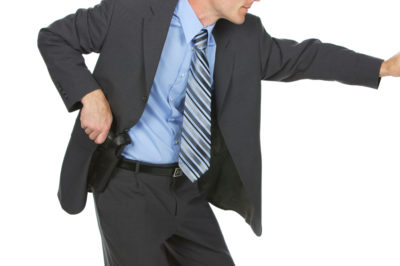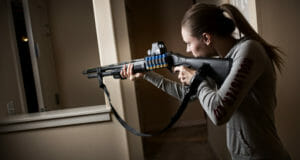Concealed carry is a hot topic in this country, and the practice of carrying one’s weapon on his or her person while hidden from view is growing each year.
Concealed carry is the form of personal weapons carry that the courts (both state and federal) have more or less agreed upon; unanimously, courts prefer that if Americans carry, they do so concealed. There are several reasons for this, the chief among them being that both law enforcement and the courts feel that exposed weapons represent too much of a threat to law and order and would potentially create too much panic should exposed carry be allowed. In fact, in places where exposed (open) carry is allowed, it’s simply not that big of a deal and people learn to accept it.
Carrying a concealed weapon represents a major compromise in the weapon’s functionality. If you doubt this statement, then a simple look at law enforcement or military units is in order. Overwhelmingly, they carry weapons exposed – not surprisingly, because exposed weapons are the easiest to get to when you need them. Concealed carry adds a measure of difficulty in accessing the weapon depending on where you carry the weapon – and how. You want the weapon totally hidden, yet you want instant access to it, both of which can be mutually exclusive of each other. Think of concealment as happening in stages or levels, and you will see how the dynamic changes:
Level 1: Concealed by coat or jacket: The easiest and most natural way to conceal a weapon is by using a conventional waist holster (preferably a high riding holster) and then slipping on a jacket or coat.
Pro:
- If the coat has any weight to it at all, the weapon will be almost totally concealed and virtually impossible to detect.
- Access is fast; push aside the coat, and your holster is right there, allowing for a draw almost as quick as if there was no coat at all, and a firm master grip upon the weapon.
Con:
- Only works where the weather permits the wearing of a coat. You don’t want to be the guy that’s wearing a parka on an 80 degree day because you are trying to conceal a pistol, which by the way, law enforcement is looking for.
Keep Your Handgun Locked and Loaded, Ready For Instant Use – Without Fear Of An Accident!
Level 2: Concealed by a loose-fitting, untucked shirt: The next best thing to using a coat or jacket, the loose-fitting, button-down shirt is a popular way to carry when coats can’t be worn.
Pro:
- Easy access to the weapon; although not as easy as the coat carry since you usually have to lift the shirt up to grab the weapon.
Con:
- Almost always dictates the use of an inside-the-waistband holster on thinner shirts since the gun will print if it’s sitting out there on an exposed hip holster.
- The closer you bring the weapon to your body, the harder it is to get a firm master grip on the butt of the weapon without wiggling the gun around.
Level 2: Concealed with a tucked-in dress shirt: This is about as concealed as it gets, but accessibility really suffers with this mode of carry.
Pro:
- If the weapon is sized accordingly (i.e. subcompact pistol) this is perhaps the lowest profile method of carry out there.
Con:
- Since the weapon lives inside the waistband, it is accessed by untucking your shirt, then yanking the gun out. Slow, laborious, and not instantly accessible.
- Almost always requires the use of a subcompact pistol unless you happen to be seven feet tall and weigh 300 pounds.
Basically, the less clothing you wear and the more you hide the gun, the harder it is to get to, and the more compromises you need to make in order to carry it. Make no mistake: an inside-the-waistband holster is a big compromise compared to a conventional hip holster, just as a subcompact pistol is a huge compromise compared to a full-size pistol.
Finally, the issue of weapons retention needs to be discussed. Your main defense against losing your weapon by way of someone yanking it out of your holster is concealment – they can’t steal your gun if they can’t tell you’re carrying one! If you think weapons retention isn’t a concern, then you need to acquaint yourself with the skills that many criminals possess – the immediate ability to spot a concealed weapon upon someone’s person. With a loose untucked shirt, for example, it’s an elementary task for someone who knows how to handle a gun to reach in behind you and relieve you of that weapon. Few concealment holsters offer a retention mechanism, so for the best chance at retaining your weapon, make certain that it can’t be seen. This might mean photographing or even videoing yourself sitting, standing, and walking with the weapon concealed, and then carefully looking for clues that you are carrying such as awkward printing or bulges. Concealed carry means just that – concealed. As always, practice drawing the weapon from its concealment, and stay sharp!
 Off The Grid News Better Ideas For Off The Grid Living
Off The Grid News Better Ideas For Off The Grid Living





